Make-a-wish
This year, we’re supporting Make-a-wish as our school charity, chosen by the School Council.
Today, we welcomed John Russo, a volunteer from Make-a-wish, who told us about the charity, the kind of wishes they make happen and how the money we raise might be spent.
Children were asked to consider how we can support the charity over this year. They could either write a suggestion for their ‘I want to say’ box or pass on their ideas to their class school councillors.
Chick Cam 3!
We’ve now got seven chicks! We’ll start moving them to the breeder box today.
Chick Cam 2!
The streams on YouTube only last for 8 hours, so here’s the next one!
It’s 17:10 and we now have three chicks with one more arriving very soon! Once hatched, the chicks need to stay in the incubator for about 24 hours to ‘fluff up’ before they are moved to the breeder box.
Chick Cam!
Good morning. Click on the following link to watch the chicks in our incubator. Two chicks have hatched already and there should be more hatching today and tomorrow! Stay tuned.
https://www.youtube.com/watch?v=ZSUKPotLzS4&feature=youtu.be
Offline Computing
Recently, in our computing sessions, we’ve been learning all about the skills of computing without using a computer (offline). To learn about algorithms (ask your child what an algorithm is) and repetition (again, ask your child to explain this term to you) we played a simple game.
We had to create an algorithm that would get us from ‘start’ to ‘finish’. Then, as an added challenge, we had to find the quickest route. Some of us even took it a step further and added more obstacles to the grid to make the algorithm more tricky. When we shared our algorithms, some of us realised that we’d made a mistake so we had to use our de-_____ skills (can your child fill in the blank?).
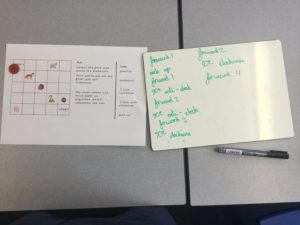
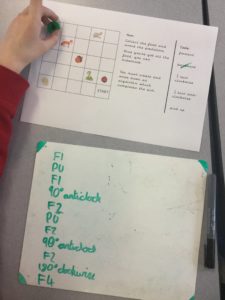
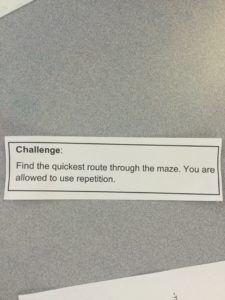
To learn more about computing, visit Barefoot Computing. It’s a great resource to help teachers, parents and children understand some of the terminology associated with computing.
Solution Science
How is this egg floating in water?
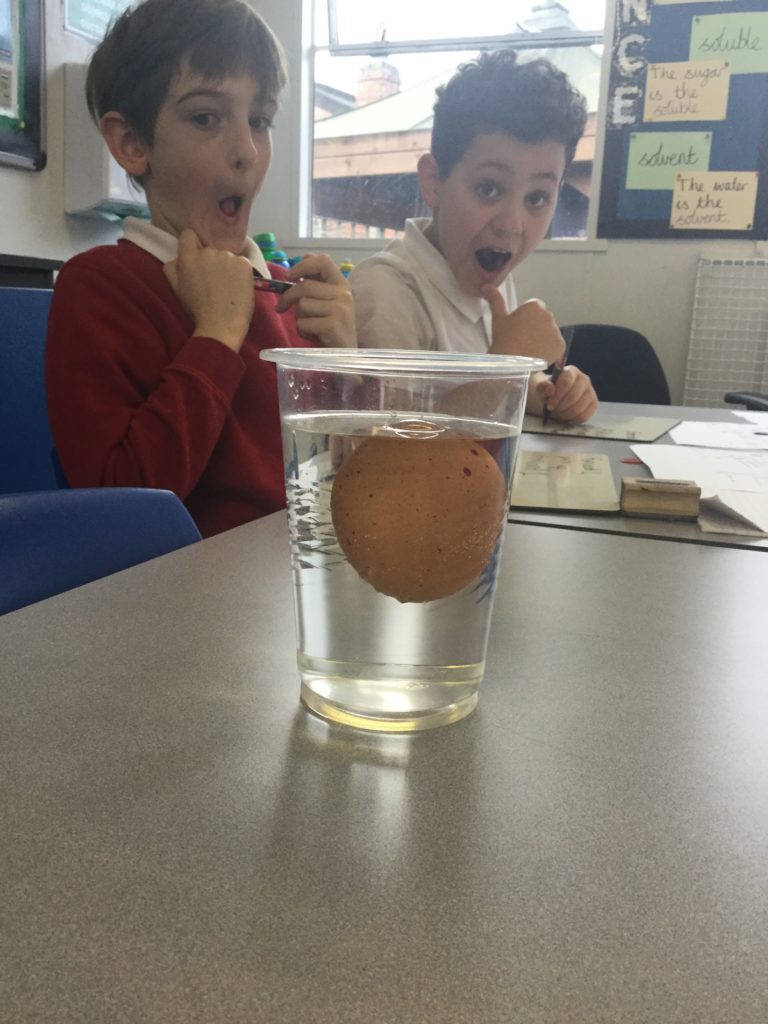
Ask your child to explain how we made this fresh egg float. Look out for the following words:
- density
- solution
- solute
- particles
Wolf Boiled Alive!
This week, at Moortown Primary School, Y5 children became detectives as they attempted to solve a mysterious crime involving three pigs and a wolf.
Children, many of whom were working on their first case, were given evidence bags containing a range of items: quotes from witnesses, newspaper headlines, CCTV footage, a range of public reaction and an expert interview.
The young detectives were then set the challenge of solving the case! They quickly got to work and within an hour had come up with a solid theory which they hoped would stand up in court. (Ask your child what their theory was.)
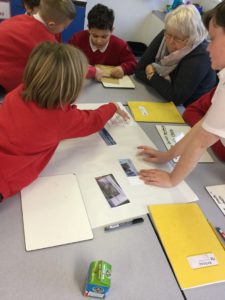
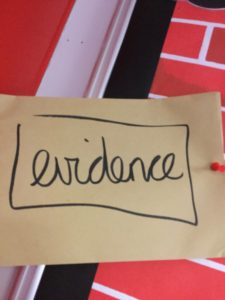
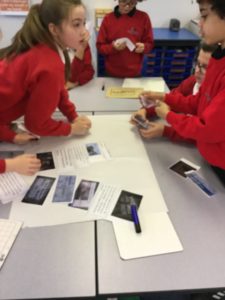
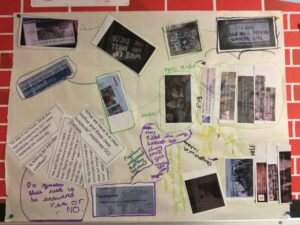
After spending some time reviewing each suspect, victim and witness, the detectives were ready for the next step: a trial. With a make-shift court set up in the Y5 classroom, the children held their own court session. With the public’s imagination captured, the children took on a role for the session: juror, judge, media, lawyer, witness or ‘The Accused’.
Mr Catherall, a teacher at the school, said: “The court case was absolutely gripping. From start to finish, the quality of the questioning was exceptional and the responses from those in the dock were just as good! All involved in the case seemed to find the whole thing fascinating and hopefully much of the information will be retained for a long time!”
After much deliberation, the jury were eventually able to come to a unanimous decision on each of the three main suspects. To find out about the jury’s verdict, contact your own child. If you require more information on this fascinating case, there is a very informative video.
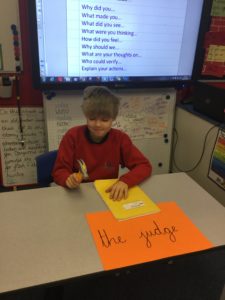
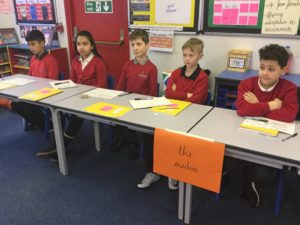
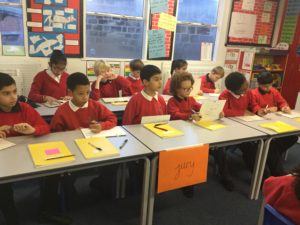
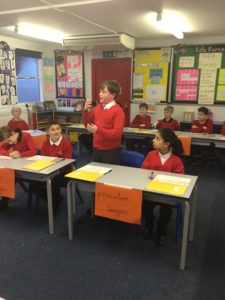
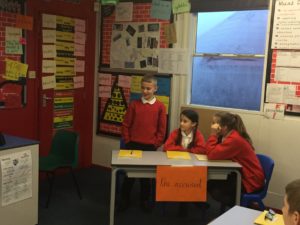
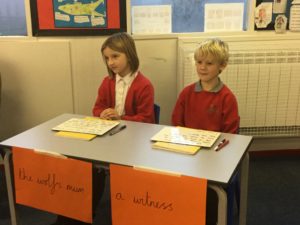
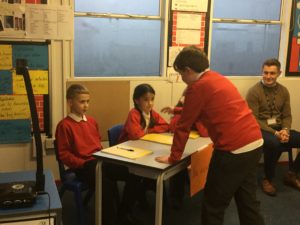
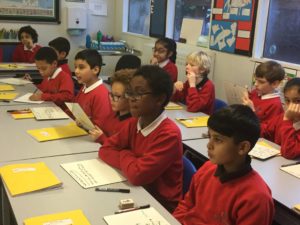
Here is a sketch (produced by a Y5 child) of the witnesses in the dock…
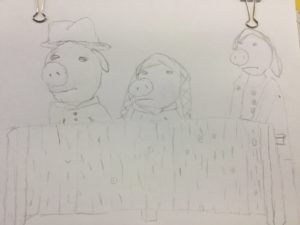
We’ll use this awesome learning next week as we write our own news reports.
Living and Learning
- Drug, alcohol and tobacco education (DATE)
- Keeping safe and managing risk
Here are the weekly Living and Learning statements, for this half term, to support this learning.
- I don’t interrupt (with my mouth or my hand).
- I can make things better.
- I know what a drug is.
- I am aware of risks.
- I make safe choices.
- I stay safe online.
Be mindful
At this busy time of year, mindfulness can help children to take control of their emotions.
During our recent themed week, all children took part in mindfulness workshops to learn a variety of techniques to use at school and at home. Here’s a reminder of a few of them that might be useful for over the holidays. A mindfulness newsletter/parent guide will be sent out in the new year.
Breathing hug

Start with both arms in the air. Put one hand across your tummy and the other on your shoulder. Breath slowly in and out.
Breathing tree

In a standing position, raise your arms as you breath in and release your arms back down as you breath out.
‘Ok’ breathing

Make an ‘o’ sign on your tummy button to represent that it is ok to feel different emotions. Slowly breath in and out.
Mindfulness bottle

This is a bit like a snow globe. Shake it up and watch it. Simply watch the disturbance as it begins to settle – as does our mind.
Take a bottle, add glitter and food colouring and seal tightly.
Have a great break!
What a start to the year we’ve had! It’s been a pleasure to get to know all of you over the first term. I hope you all enjoy a well-deserved break and come back to school ready and fresh to learn on 02 January.
As it’s the holidays, there’s no homework this week but there is a few things I think you should try and do over the festive break:
- spend time with family
- spend time with friends
- play outside
- throw a snowball
- build a snowman
- read a book, or two (or three)
- do something nice for your parents or carers
- spend some time relaxing and being mindful – remember our workshop?
- investigate something you observe
- be polite to everyone you meet
- eat a few treats (and plenty of veggies!)
- and, last but not least, have a generally awesome two weeks
Well done, Year 5 – here’s to more hard work and fun in the new year!